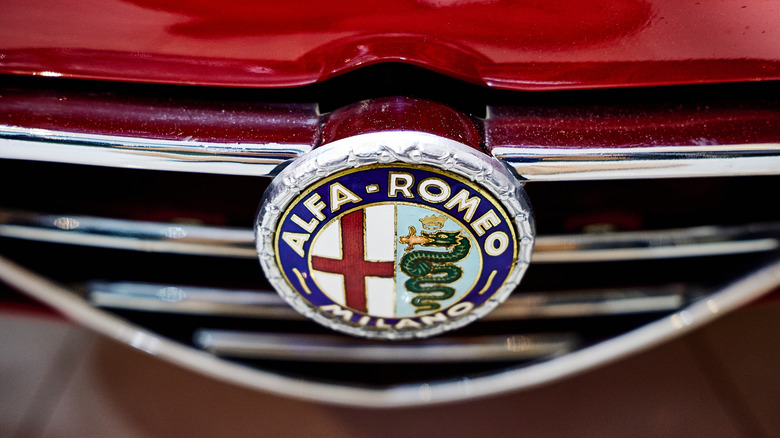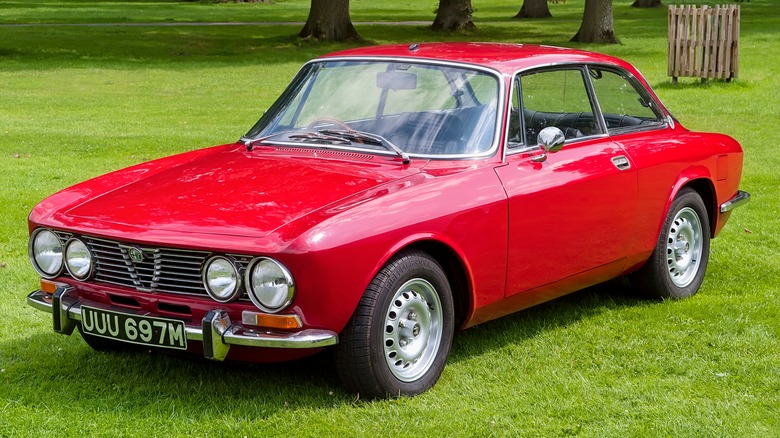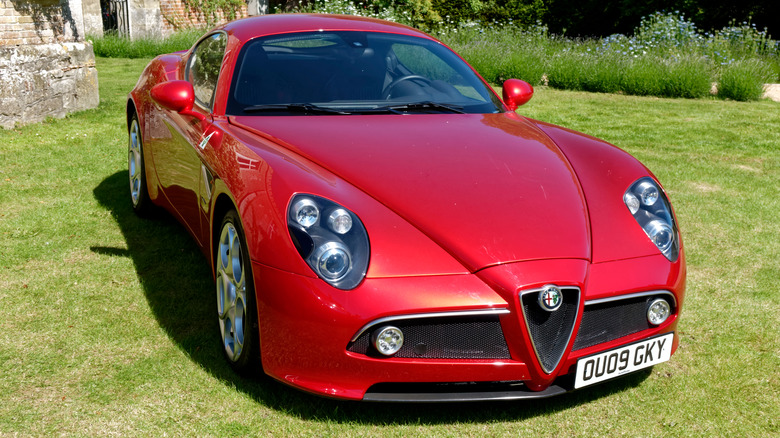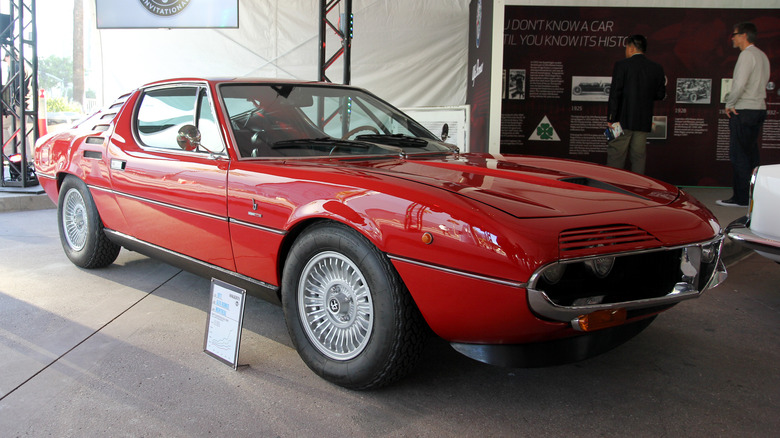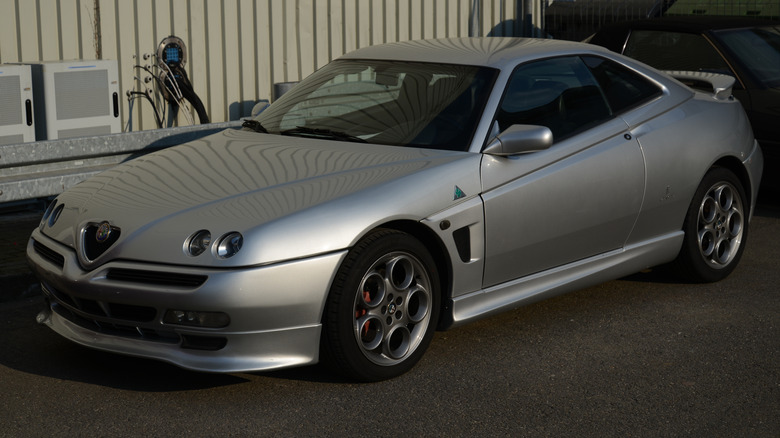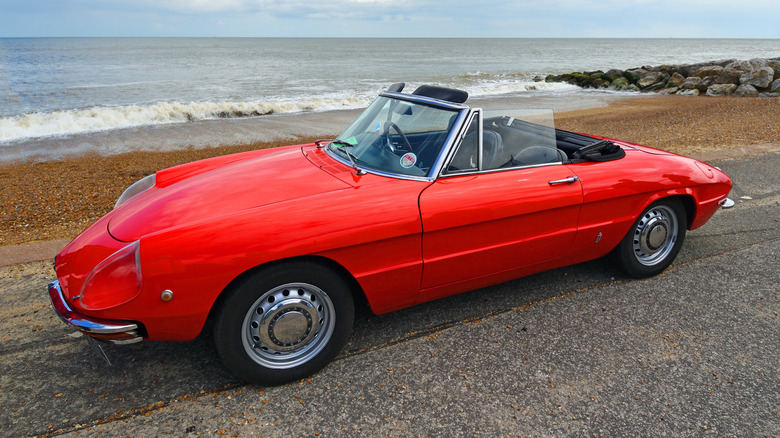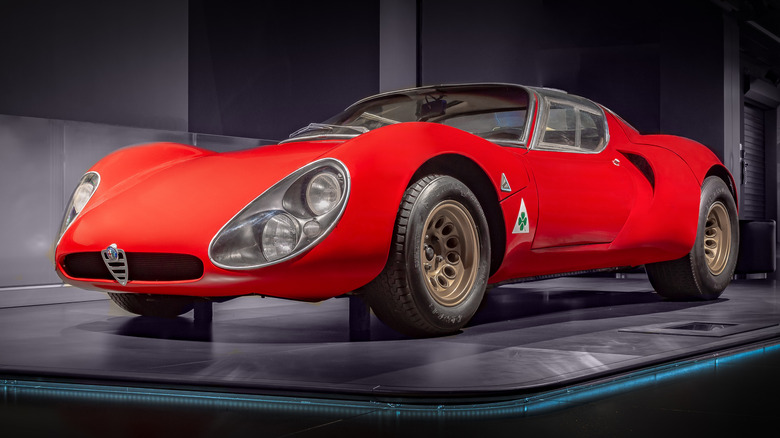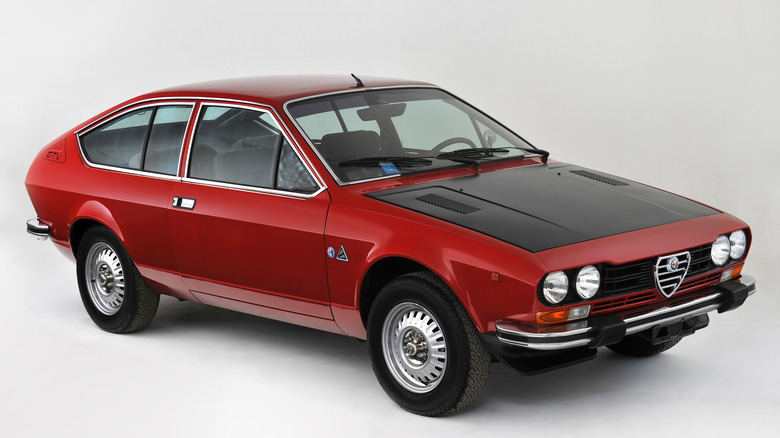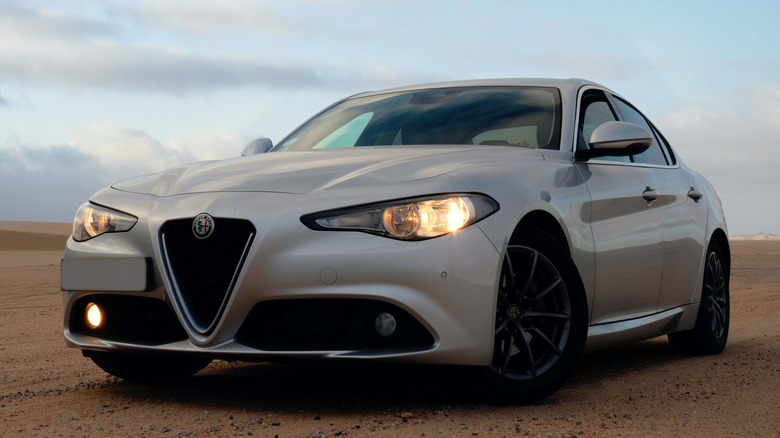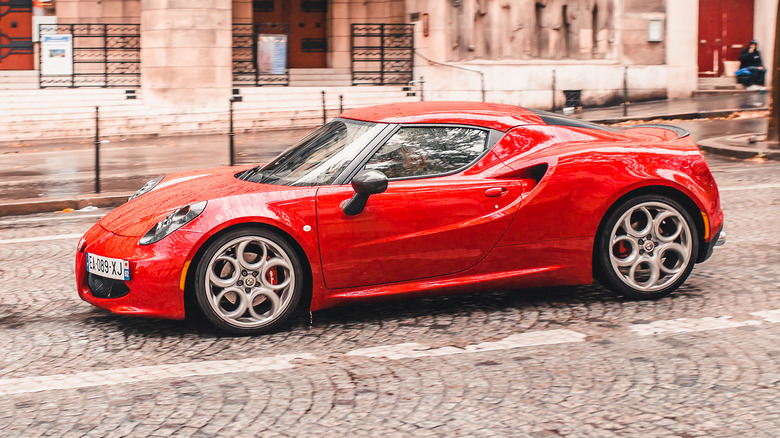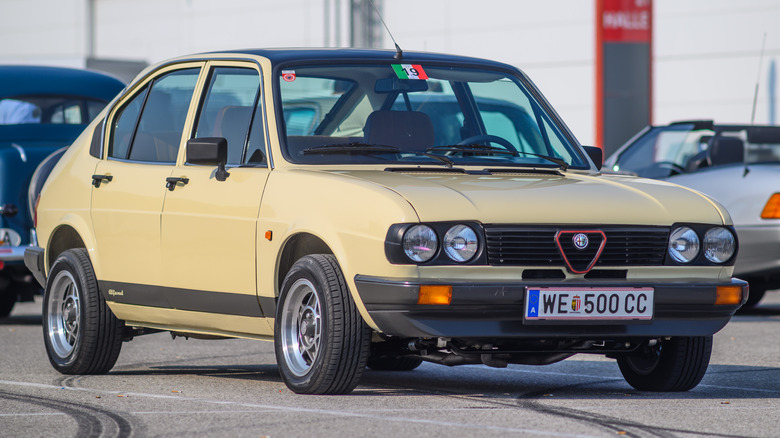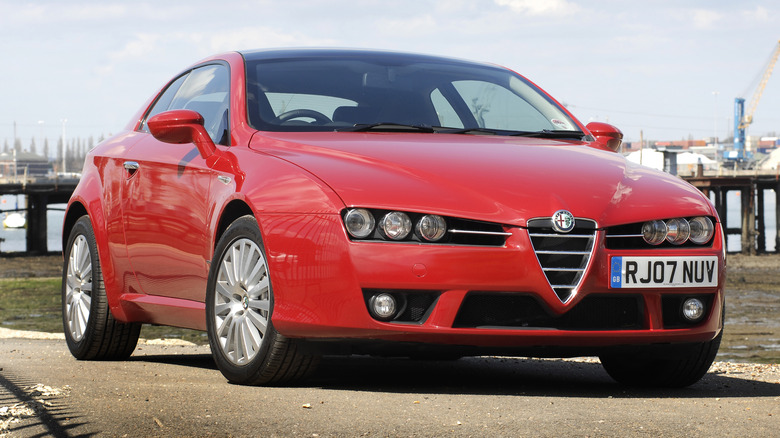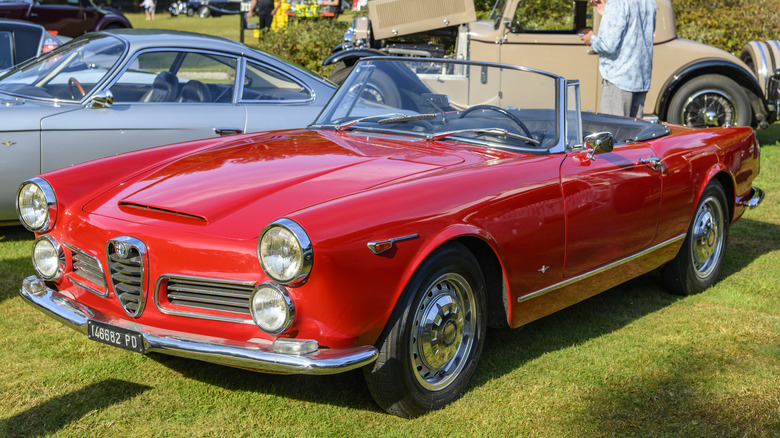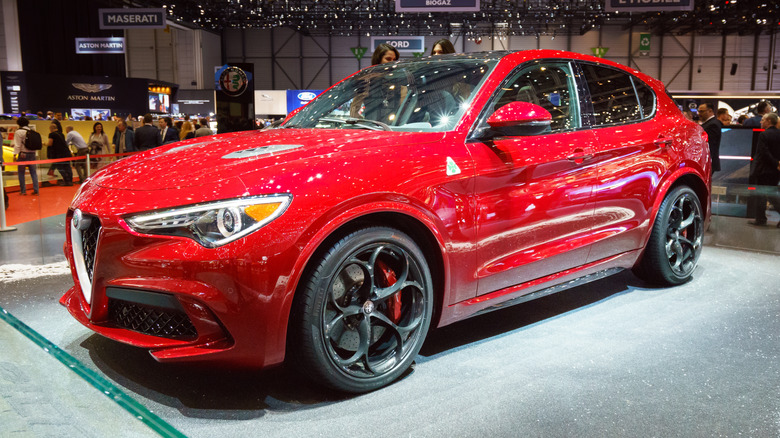15 Best Alfa Romeos Of All Time
Alfa Romeo arguably makes the most beautiful cars on Earth. They are not known for legendary reliability like a Toyota and they are not known for impeccable engineering like a BMW, but beauty in design — both inside and out — is the most compelling feature of any Alfa. Even the engine bay of an Alfa is a work of art. Therefore the only real standard on which to judge any Alfa is aesthetics. Any mechanical or technological breakthrough presented on any particular model is just a bonus adding to the overall package.
Jeremy Clarkson once said on Top Gear, "alfa builds a car to be as good as it can be...briefly." In automotive lore, Alfas a great to look at and brilliant to drive, but maybe not so great to own. That said, Alfa fans continue to buy the vehicles and love them. Many of Alfa's historical models have introduced some great engines and plenty of Alfa race cars have brought home trophies. Alfa has a long history, building cars from the start of the twentieth century, and leaves many good models to choose from (via Alfa Romeo). With Alfa's forte in building attractive machines, the best parameter for choosing the best relies mostly on aesthetics. With that in mind, these are the fifteen best Alfa Romeo vehicles.
2000 GT Veloce - 1971–1977
Jason Torchinsky of Jalopnik sums up the 2000 GT Veloce nicely when he says it is "beautiful in that way things are when they're just so right." It is one of those cars that has not one single defining feature that makes it stand out, but a seemingly perfect amalgamation of curves and creases in steel that just makes you yearn to jump in for a spirited Sunday drive. With its twin Dellorto carb, twin-cam 4-cylinder 132 horsepower engine, it won't be the favorite at the midnight drags, but it will keep up with the best of them through the twisties on an Appalachian highway (via Bonhams).
The early 1970s 2000 GT Veloce is derived from the Giulia line of cars that began production in the early 60s and terminated shortly after the Vietnam War. The naming of the different models can be somewhat confusing as they used different combinations of names and numbers and letters, but with its quad headlights and unbroken crease from front to rear, the 2000 GT Veloce is the high point in terms of design. As such, well-sorted examples continue to retain their value and can fetch more than $70,000 at auction.
8C Competizione - 2007-2010
After having left the American market for many years, Alfa Romeo decided to come back with a tour de force. While CNN labels the official return of Alfa in 2014, the 8C was imported starting in 2008 at a price of $260,000. The 8C was not accompanied by a full brand introduction with a new dealer network, the 8C sold more like a niche supercar, which is an accurate description of it.
Not long after it went on sale, Motor Trend reviewed it. The 8C features a Ferrari-derived 4.7L V8 -– the brand was owned by the same parent company, FCA, at the time -– and it delivered 450 horsepower at 7000 RPM. With its relatively low curb weight and near-perfect 50/50 weight distribution, the 8C is a lively driver with stunning looks. With only 100 of them having been imported to the U.S., prices since new have only gone up, with a recent example sold on Bring A Trailer for $351,000.
Montreal - 1970-1977
It seems with legacy automakers, especially those that have been around for a century, have some sort of requirement that they build an oddball car at some point. Alfa Romeo chose to build the Montreal. Not only is the car a bit different, but even the naming of it bucked tradition for the Turinese company.
Styled by Marcello Gandini, the same gentleman who penned the lines of the iconic Lamborghini Miura, the Montreal shows off a clear influence from the Italian bull. However, the Montreal is a front-engine GT car powered by a 2.6 liter twin-cam V8 with SPICA mechanical fuel injection. The travesty of laying out the many alluring facets of this car in writing is it disallows the reader the opportunity to take in the sonorous delight of the Montreal's mechanical heart, popping and growling through its twin chrome exhaust tips lined up in the center of its tail (via: Classic and Sports Car).
Only 3900 were made and none exported to North America. It is probably a nightmare to service and terrible to own. But with its slightly odd slotted useless eye covers and faux vents aft of the windows, it is a work of art and there is a reason that a nicely kept example can run up an auction bid north of $60,000 with ease.
Alfa Romeo GTV - 3.0 1995-2003
The 1990s were a peculiar time for making cars. It was a time in which the modern was being embraced and some of the things we take for granted today were being introduced, such as fuel injection and airbags. The styling was in the same kind of flux in which the old classic lines with lots of chrome and big bumpers were being traded for sleek contours and molded plastics. It was also a time for some of the most interesting designs of Alfa Romeo. Case in point: The 1995-2003 GTV 3.0.
Although never imported into the U.S., the GTV would have been at home among the Rx-7, 300 ZX, SL500, and Dodge Stealth. It is a 2+2 setup with a really slick wedge shape and oddly small headlights. The interior is a well-sorted luxury affair with heavily bolstered leather seats and a handsome dashboard complete with triple gauges on the center stack. Ultimate Specs tells us it is powered by a 24 valve 3.0-liter V6 engine that outputs 217 horsepower. With a curb weight of just over 3000 pounds, the GTV shoots to 60 in just 6.7 seconds with a top speed of 149 MPH, a respectable time for the mid-nineties. One of the things that are unmistakable Alfa is the appearance under the hood. This car is beautifully styled; even the engine is a work of art. The chrome intake tubes and finned valve covers show that, for Italians, style is everything.
Spider - 1966-1969
The most popular Alfa Romeo model in the U.S. has got to be the Spider. It is the two-seater convertible that would probably be the image of most Americans of a certain age when Alfa Romeo comes up in conversation. The Spider is an attractive vehicle with fun go-kart-like handling and sprightly acceleration.
While the Spider was in production from 1966 to 1994, it was the first iteration that captured America's attention, most notably due to its inclusion in The Graduate with Dustin Hoffman. Not only was it Hoffman's breakout role, it brought the same attention to the car, although this did not translate to sales success, according to Collier Auto Media. Still, the association with the movie led Alfa to add a Spider model dubbed The Graduate to its trim offerings later on in the eighties. Regardless of its sales success, it is a handsome roadster, powered by a twin-cam 1.6L engine. Its distinctive lines and boattail rear end were the last ones drawn by Battista "Pinin" Farina, founder of the Pininfarina automotive styling house, in his career. For Farina, the Spider is certainly a high note to go out on.
33 Stradale - 1967-1969
Perhaps the most beautiful of all Alfas, the 33 Stradale is a special machine. It seems every decade or two, Alfa Romeo will produce a limited run of a highly exclusive and high-performance car, and this was it for the 1960s. The Stradale was a road car based on the Tipo 33 race car, according to Petrolicious. It had a 2.0L V8 with Alfa's SPICA fuel injection that produced only 230 horsepower. However, the rest of the car is comprised of a tube frame chassis and wrapped by a magnesium-aluminum alloy body to keep the weight to a minimum. This meant that the car not only had achingly good looks but speed to boot.
The Stradale was hand-built by Autodelta, Alfa's racing development department, and designed by Bertone protege Franco Scaglione. Top Gear also tells us the original price of the car in today's money was around $120,000, which is not considered high in today's market, but exceedingly expensive in the 1960s, even talking in inflation-adjusted dollars. Regardless, only 18 copies were made over the two-year period and that makes them exceedingly valuable today. Pricing them is difficult as they rarely come up for sale but it would be easy to surmise an auction could go over the $10 million mark.
Alfetta GTV6 - 1980-1986
An oft-overlooked Alfa of the 1980s, the Alfetta, is an interesting choice of automobile. Motor Trend called it, "tragically flawed, but charismatic." Those are choice wors for this vehicle. The Alfetta sat in the market in the sports touring segment along with the Porshe 944, and, like the Porsche, featured a transaxle at the rear to aid in achieving 50/50 weight distribution. A few other unique features of the Alfetta include the clutch being mounted at the transaxle at the rear, meaning the engine remained untouched for a clutch service, inboard disc brakes in the rear, and a DeDion bar rear suspension setup. The engine is a V6 producing 155 horsepower using a twin-cam setup with hemispherical combustion chambers.
The performance of the car is lively, but it is said that the driveshaft can be problematic due to the rear transaxle setup. The styling, done by Giugiaro, is decidedly eighties but still a reliably attractive Alfa look. For those who prefer to punish themselves through automotive exploits, there is good news in the Alfetta. It is a reasonably sporty driving car with good looks and a decent amount of power and can be had for modest prices, but they are rising quickly. Recent auctions on Bring A Trailer show them starting around $7,000 with nicely kept models approaching $40,000 and it is worth noting that the GTV6 is one of Jeremy Clarkson's most prized possessions.
Giulia - 2017-Present
The importation of the Giulia for the 2017 model year, Alfa Romeo solidified its return to the American market. Having brought over the extremely low volume 8C supercar and the slightly more mainstream 4C a few years later, Alfo primed American consumers for Italian upscale motoring, slowly. The Giulia is its first sedan in the American market since 1995 when the last Milano was sold stateside. A lot has changed since then, but Alfa styling has remained on top of the game.
With modern cars being designed by computers and trying to achieve the lowest drag coefficient, many cars almost look the same. It takes skill to produce a sedan that really stands out, and the Giulia does this fairly well. Speaking about the newest model on sale, Road and Track says it comes with a turbocharged 4-cylinder engine producing 280 horsepower while the Giulia Quadrifoglio sports a V6 with 505 ponies. They also recommend seeking out a good warranty as reliability issues continue to be associated with new Alfas.
The interior is well-appointed with all the requisite options and electronics upscale modern cars are assumed to have. Like many Alfas, the car is not without its issues. For example, Jeremey Clarkson notes just how difficult it can be to just get out of, as the door openings seem to have been placed wrong, but at the end of his review on The Grand Tour, he bought one despite its obvious flaws.
4C - 2015-2020
With half the name and half the cylinders of the 8C Competizione, one might assume the 4C is half the car, but they would be wrong. The 4C is a smaller, yet capable roadster in the same vein as the 8C at a much more affordable price and has more in common with a Lotus than most other cars. It heralded the return of the brand officially to the U.S.
The 4C is equipped with a somewhat small turbocharged 1.8-liter 4-cylinder engine producing 240 horsepower, according to Autocar. While the power output is modest, the light curb weight results in a power-to-weight ratio of 259 bhp per ton. That is quite good and it is all thanks to being built from a carbon-fiber tub, something normally reserved for supercars with a price three or four times the original MSRP of around $60,000. We found it to be a thrill to drive and that any shortcomings it may have are easily made up for in it being a blast to drive in our review.
The 4C excels at being a fun, sporty car that remains manageable and at a cost that it can be truly enjoyed and not locked away on a pedestal, only to come out for the odd car show or Sunday drive. Unlike many of Alfa's most attractive historical designs, the 4C was designed in-house by Centro Stile Alfa Romeo and it retains that unique Alfa look that permeates this brand full of automotive beauty.
2000 - 1958-1962
The Alfa Romeo 2000 was among the first models of Alf imported into the U.S. thanks to legendary importer Max Hoffman, the man responsible for bringing BMW, Porsche, and Mercedes-Benz to the country.
The 2000 was introduced in 1958 and it featured Alfa's twin-cam 4-cylinder engine while the body was manufactured by Carrozzeria Touring, according to Classic Motorsports. While the 2.0-liter engine produced 115 horsepower, the car's relatively heavy 2700 pounds meant that its acceleration was moderate for the time. Although the 2000 is a highly attractive design, its original selling price of $5,700 prevented it from being a runaway sales success. Alfa continued to be a niche seller in the U.S. which makes this car a difficult one to find today. Like so many other classic Alfas, when these do go up for auction, a selling price well over $50,000 is not unusual, like this one from Bonhams in 2018.
Alfasud - 1971-1989
In a list where the cars have heavy hand toward their aesthetic qualities, the Alfsud may be a bit misplaced. Yet it is very relevant to the Alfa Romeo brand just as the Beetle is to Volkswagen. The Alfasud is the best-selling Alfa of all time, having sold, according to Good Car Bad Car, more than a million units in its entire run. That may pale in comparison to the Beetle, but Alfa has always been a niche brand selling unique, upscale, sports, and luxury vehicles in relatively small numbers.
Auto Evolution tells us it was Alfa's first series production front-wheel-drive car and was propelled by an unusual engine for Alfa, a 4-cylinder boxer. The diminutive car's little boxer was a mere 1.3-liter affair that boasted of 62 horsepower. Early models were highly prone to rust and a lot of that blame was placed on low-quality steel being used without much of any rustproofing. Furthermore, Classic and Sports Car says government ownership of Alfa at the time led manufacturing of the new car to be done in the south of Italy to boost labor in the region, even though it had little history of auto manufacturing. Rustproofing improved in later models and power got bumped to 75 horsepower.
All things considered, it remains an interesting car and despite being a basic economy car, it possesses that unmistakable Alfa flair. The Alfasud remains an affordable classic Alfa in Europe where one can be had for well under $10,000.
Brera - 2005-2010
In 2006, Car and Driver announced the impending return of Alfa Romeo starting with the importation of the Brera and its convertible sibling, the Spider. They tested the car in Italy and spoke highly of its GM-derived but Alfa-perfected 3.2-liter direct-injection V6. They spoke highly of its mechanical attributes while spending little on its styling. Not only did they miss the most important feature of this exceedingly gorgeous automobile, but they also missed its subsequent arrival completely.
As history will have it, the Brera never came to the States. We were deprived of yet another fantastically styled Italian beauty. That it is a beautiful car is nothing up for debate, but whether it is a good car could be. The Australian publication Drive gave it the highest marks for styling and for fit and finish, but the situation deteriorates as soon as it goes into gear. It actually starts before then, as the seats are said to be uncomfortable, but the driving experience is said to be somewhat languid and unimpressive. The car is on the heavy side and doesn't have the power to match. Whatcar only managed three of five stars with an equally middling review. Perhaps it is not one of the best cars ever, but it still is one of the best looking.
2600 Sprint - 1962-1968
Topping the Alfa range through most of the sixties is its attractive 6-cylinder 2600. Produced in both convertible and coupe forms, it represents upscale Italian motoring with traditional Alfa beauty. There is a lot to like about the 2600 from its quad headlights and understated hood scoop to its slightly flared wheel arches and abundance of chrome. It's a nice-looking vehicle.
Its name is derived from the engine. Hagerty explains that the engine is an inline 6-cylinder of 2.6 liters topped with a crossflow head with hemispherical combustion chambers. It is fed through a pair of Solex carburetors and all combined is good for 130 horsepower. A third carburetor in some models boosts power to 145. The engine is said to make the nose a bit heavy and really only just powers the car well enough. However, with something that looks this good, all-out speed is not a huge consideration. The 2600 is the perfect car for a leisurely drive down the parkway. As with so many classic Alfas, the 2600 sold in relatively small numbers to an upscale market, and there is not a lot left, which means today they command top auction prices with some nice examples topping $100,000.
Stelvio Quadrifoglio - 2017-Present
A fact of the market of modern automobiles is that the SUV rules. No auto company can stay in business without an SUV in the lineup, and that is why such brands as Bentley, Lamborghini, and Maserati now sell one. The Stelvio is the first Alfa Romeo offering for the segment and, in true Alfa fashion, it is an attractive SUV.
The Stelvio's styling lines run consistent with its stablemate, the Giulia, and keep the Alfa styling DNA intact. However, looks aren't everything and the Stelvio Quadrifoglio is definitely a driver's car. We found it to be a phenomenal track machine where it gets to show off its achievement as the fastest vehicle in its segment, besting the comparable BMW, Porsche, and Mercedes models. Its twin-turbo V6 makes the same 505 horsepower as the Giulia Quadrifoglio and puts it to the ground via an eight-speed ZF transmission with the aid of plenty of electronics.
The drawback of it being a driver's car is that it is not the best at being a passenger's car, having a stiffer suspension than the competition and offering a ride that can be a bit jarring for the kids on the way home from school. The Stelvio puts Alfa flair above all and delivers an exhilarating driving experience while looking good doing it. That is what makes a car an Alfa Romeo.
